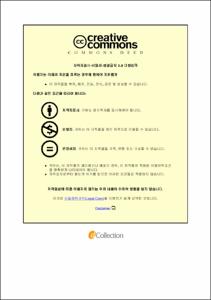First-Principles Study on Thermoelectric Properties of Strained Mn4Si7 and SnSe and Spin Hall Conductivity of 4d/5d Transition Metals
- Abstract
- During the past decade, the density functional theory (DFT) method has become the most powerful and widely-used tool for investigating various properties of many condensed matter systems. It has had an increasingly important impact on materials science, not only in fundamental understanding but also with a strong emphasis on materials design for future technologies. The simulations using DFT are performed with atomic level via solving the Schrödinger equation to obtain energies and forces, require only the atomic numbers of the constituents as input. The success of DFT is not only limited in explaining existing phenomena, understanding the properties of many new systems, but also in designing new materials, providing a guideline for experiments. For example, based on DFT calculations, it was found that tetragonal iron-cobalt alloys were proposed as promising materials with the desired high uniaxial magnetic anisotropy and high saturation magnetization.1 After the prediction based on DFT, the stability of the tetragonal FeCo phase had been confirmed experimentally in FeCo/Pt superlattices.
Recently, there has been attention to thermoelectric and spintronic materials due to the demand to find the solution for the growing energy crisis. Designing new materials which show high performance and reduction of power consumption in those two topics is a big challenge. For that purpose, in this dissertation, we use the density functional theory to study the materials, dividing into two topics:
First, we study thermoelectric materials. The motivation comes from the fact that the search for a new source of energy has recently increased rapidly because of the high demand due to the high price and possible exhaustion of traditional energy sources such as fossil fuel. However, current systems are not so effective, with more than 60% of the energy being wasted as heat.3 In the search for new sources of energy, thermoelectric materials have received much attention owing to their capability to convert thermal energy into electrical energy. In spite of having a long history, the performance of thermoelectric devices is still limited. The best commercial thermoelectric materials currently used in thermoelectric devices are Bi2Te3 and its alloys with an efficiency of about 10%. Finding new thermoelectric materials with high performance, containing no-toxic and low-cost materials is a big challenge to thermoelectric research activities. In this dissertation, based on two materials having high thermoelectric performance Mn4Si7 and SnSe, we show that the performance of two materials can be further enhanced via band structure engineering by strain effects. The detailed studies and discussions of these works are given in chapter 3 of this dissertation.
The second topic is spintronics. Spintronics has rapidly emerged as a highly pursued research area in solid-state physics and devices owing to its potential application in low power memory and logic as well as the rich physics associated with it. Traditionally in spintronics, Giant Magneto Resistance (GMR) in spin valves and Tunnel Magneto Resistance (TMR) effects in magnetic tunnel junctions have been used to manipulate ferromagnets. Even large achievement has been obtained in spintronics using GMR and TMR, switching magnetization is still based on the external magnetic field, which requires a large current to generate it. Recently, current-induced magnetization switching has been extensively studied due to its advantages over the methods using the external magnetic fields. Two concepts using current-induced magnetization switching have been proposed: spin-transfer torque (STT) and spin-orbit torque (SOT). Among those two concepts, SOT is found to provide lower power consumption, faster switching, and more stability compared to STT method. However, to realize SOT devices, a large spin current is required. Therefore, finding the materials which can create a large spin current has become the big challenge. Among the methods used to generate the spin current, the method using the spin Hall effect has received a lot of attention. In this work, we show that the spin Hall conductivity of materials can be enhanced due to the modification of band structure via alloying. Detail calculations of spin Hall conductivity of materials will be discussed in chapter 4 of this dissertation.
- Issued Date
- 2020
- Awarded Date
- 2020-08
- Type
- Dissertation
- Affiliation
- 울산대학교
- Department
- 일반대학원 물리학과
- Advisor
- Prof. Soon Cheol Hong
- Degree
- Doctor
- Publisher
- 울산대학교 일반대학원 물리학과
- Language
- eng
- Rights
- 울산대학교 논문은 저작권에 의해 보호받습니다.
- Appears in Collections:
- Physics > 2. Theses (Ph.D)
- 파일 목록
-
-
Download
 200000337414.pdf
기타 데이터 / 15.17 MB / Adobe PDF
200000337414.pdf
기타 데이터 / 15.17 MB / Adobe PDF
-
Items in Repository are protected by copyright, with all rights reserved, unless otherwise indicated.